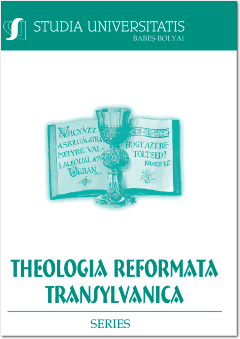REFORMÁTUS EGYHÁZKORMÁNYZAT A TISZÁNTÚLON ÉS AZ ERDÉLYI FEJEDELEMI HATALOM
REFORMED CHURCH GOVERNMENT IN THE TRANSTIBISCAN AREA AND THE RULE OF THE PRINCIPALITY OF TRANSYLVANIA
Author(s): István SzabadiSubject(s): Christian Theology and Religion, Theology and Religion, Islam studies, Comparative Studies of Religion, Religion and science , Sociology of Religion, History of Religion
Published by: Studia Universitatis Babes-Bolyai
Keywords: Reformed church in th 16th century; Reformed princes; church administration; Transylvania; Transtibiscan Church District.
Summary/Abstract: The formation of the Protestant church hierarchy started already when a separate position was established to ordinate Protestant pastors. Protestants did not regard priests as separate ordo, and yet, after its organization az church it inherited or acquired those privileges, which were available for the Roman Catholic priests also. They enjoyed tax-exemption, they were provided with the tithe, parish houses were regarded as noble mansions, soldiers were never quartiered in them, and lawsuits could be started against pastors only at ecclesiastic courts. Transylvania did not have a bishop after 1542, as Johann Statileo died, the right of ordination was practiced by vicars.The pursuance of the Reformation trends was also influenced by the boards of the former archdiaconates. The formation of the latter Transtibiscan Church District had three centers. The strengthening of the Reformed episcopal power happened during the time of Reformed rulers.The Reformed princes of the beginning of the 16th century implicated themselves in the problems of the religion, which became the leader in Transylvania and Partium, and in this way had a major influence over the church administration also.
Journal: Studia Universitatis Babeș - Bolyai Theologia Reformata Transylvanica
- Issue Year: 62/2017
- Issue No: 2
- Page Range: 135-143
- Page Count: 9
- Language: Hungarian

